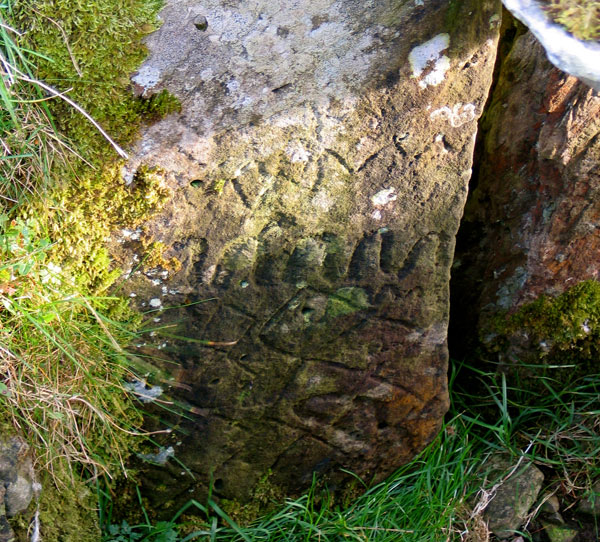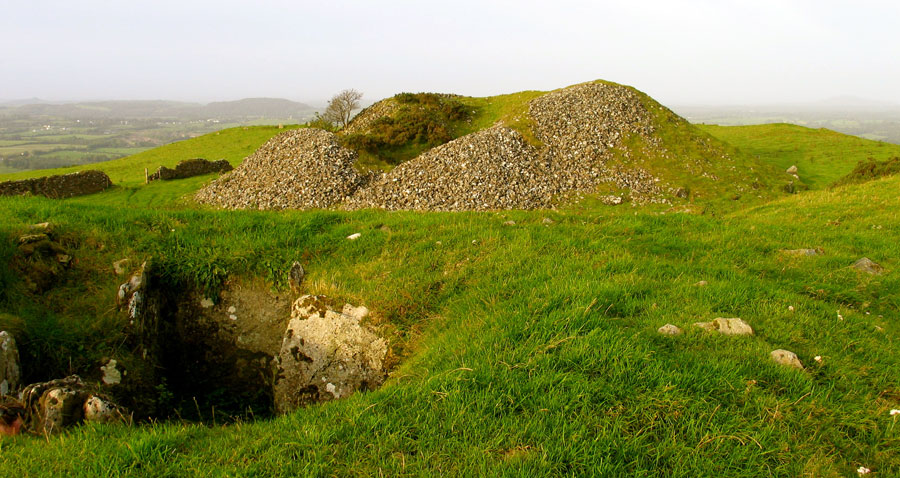Cairn E
Little remains of this monument, which was probably about 7 m in diameter. It is recorded on du Noyer's plan of the sites on Cairnbane West.
Cairn F
Cairn F is a kerbed mound about 15 m in diameter. The cruciform chamber is oriented to the east (about 80°), and there are several decorated stones.

Conwell, excavating in 1865, found a stone basin in the north (right hand) recess, and a mysterious iron-stone ball in the south (left hand) recess:
About five feet in height of the original carn still remain. Its diameter is sixteen and a half yards. Clearing away the loose stones and earth which filled the centre showed the arrangement of the interior chambers to be in the form of a cross, the shaft, denoting the passage to the chambers represented by the top and arms of the cross, having a bearing of E. 10° N.
The length of the passage is eight feet, and it is two feet two inches broad. The entire length from the commencement of the passage to the extremity of the opposite chamber is fifteen feet, and the breadth from the extremity of the southern to the extremity of the northern chamber is nine feet four inches. The commencement of the passage is not closed up by a block of stone, but merely by small loose stones laid against it. Only one of the roofing flags, covering the commencement of the passage, remains in its original position.
Across the entrances of the southern and western chambers are laid stones, about a foot in height, and from four to five inches in thickness. On the floor of the northern crypt rests a rude sepulchral stone basin, three feet five inches long, two feet four inches broad, and five inches thick. Under this basin were found a portion of a bone pin and a flake of flint.
In the south-western corner of the southern chamber, and about a foot from the bottom, was found, imbedded among the clay and stones which filled it up, a brown ironstone ball, three inches in diameter, and well rounded. Several fragments of bones lay scattered indiscriminately here and there upon the floor.
Eight of the stones in these chambers are sculptured, and on the south side, three of the original boundary stones enclosing the carn are still standing.
According to Martin Brennan, Cairn F is aligned to the rising sun at the end of April, and so warns that the May cross quarter day is near. Brennan's system makes sense: that the cairns are an intergrated group of astronomical indicators, and that the sun, leaving one chamber will soon enter another.

Cairn G
Cairn G is located immediately beside Cairn F. Their kerbs are just about touching, but Cairn G's kerb flattens slightly to avoid contact. The diameter of this mound is about 20 meters, with only 8 kerbstones in place in Conwell's time. All that remains of the chamber is a hollow in the centre of the mound, and no evidence remains of passage or orientation.


